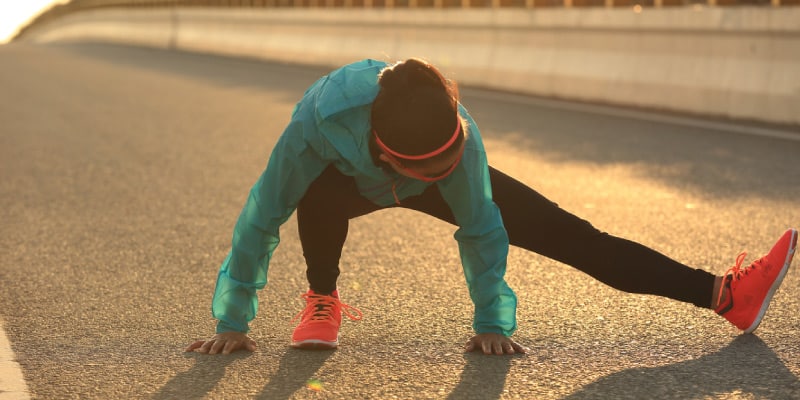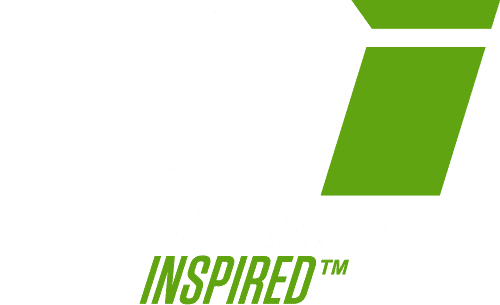How to Improve Your Mobility to Improve Your Workouts

Often when we’re considering our fitness goals, mobility doesn’t even enter the equation. But, if you want to work out your hardest, squat your deepest, bench your highest and finally, finally get down to the floor to touch your ever-elusive toes, you’ve got to start stretching. According to the Mayo Clinic, taking the time to stretch is going to improve your range of motion, improve your athletic performance and help to prevent injury. Stretching is so worth it.
So, yeah, stretching is kind of boring and it’s uncomfortable and it’s the last thing you want to do after you just crushed your workout, but it’s necessary if you want to continue to improve in the gym. Your progress toward your fitness and physique goals will show the difference.
Fix Your Squats

When you’re deep into a squat, your focus is usually on your power and your form. But when you’re squatting, your flexibility and joint mobility (or lack thereof) can make a huge impact on what you can do. By stretching before and after your squats, you can improve your range of motion and thus how low you can go. Want to get the coveted ass to grass? You’ve got to work on your mobility.
“You may not be able to correctly position your knees, or your tight calves may limit ankle mobility,” BodyBuilding.com says. “Any of these can ruin your technique, and good technique is the key to performance and injury prevention.”
Before you start your workout, BodyBuilding.com suggests giving your muscles a little myofascial release. This sounds a lot more complicated than it is, but it’s going to help your muscles loosen up before you squat. “Myofascial release is a manual therapy technique often used in massage,” according to the Mayo Clinic. “The technique focuses on pain believed to arise from myofascial tissues – the tough membranes that wrap, connect and support your muscles.”
Use a foam roller or a lacrosse ball to rub those muscles out. “Probable candidates include your thoracic spine, IT bands, calves and glutes,” according to BodyBuilding.com. “Roll your worst offenders for at least 30 seconds. Put pressure on the especially tight areas until any pain dissipates.”
Stretching out your hips, hamstrings and even your ankles can be especially helpful when it comes to improving your squats. “In the bottom (or hole) [of your squat], your ankles need to be fully flexed, known as dorsiflexion,” according to BodyBuilding.com “If your range of motion is limited, you won’t be able to squat past parallel without being in pain.” Stretching your calves and ankles through myofascial release and static stretches can help you get low.
Relieve Some Of That Post-Press Pain

If you’re feeling some tightness, stiffness or straight up pain after a heavy bench press, you’re not alone and your situation is not hopeless. You don’t have to experience upper back pain or chest tightness after you bench. The solution could be as simple as stretching. A foam roller can help with stretching and smoothing out your muscles before you even begin your workout, but in order to really improve, you’re going to need to stretch after your workouts as well.
If you’re experiencing tightness in your pectorals, try an active stretch after your workout. “The active stretch uses a technique called eccentric quasi-isometrics to help restore your pectoral muscles to their natural, resting length,” according to Men’s Health. “At the same time, it also builds stability and strength at extreme shoulder joint angles, which help protect your rotator cuffs.” Get into a pushup position with your hands propped up on low medicine balls or the handles of dumbbells. With your forearms vertical, lower yourself a few inches below your hands and hold the position. Feel the stretch for 30 seconds to 120 seconds.
If your upper back feels tight or painful, try stretching it out after your workout. Place your hands on a wall a little farther than shoulder-width apart so that they form a 90 degree angle with your body. Walk your feet back until your arms are straight, and, keeping your palms against the wall, bow between your arms by hinging forward at your hips. Don’t push on the wall or let your arms raise or you could compromise your shoulders. You should feel a good, satisfying stretch right between them.
Finally Touch Your Toes

Has it been awhile since you’ve been able to comfortably bend down and touch your toes? Have you ever been able to? If the last time you can remember being able to reach down and touch your little piggies is when you were still young enough to refer to them as little piggies, it might be time to work on your hamstring flexibility. Being able to touch your toes is a great stretch for your whole body, according to the BBC, but your tight hamstrings and hip flexors might be holding you back.
Men’s Journal has a stretching routine that will help you get your hands to the floor. Start by taping two lacrosse balls together. Seriously. Lay on your stomach with the lacrosse balls just below one of your hip bones. Put some weight on the lacrosse balls – not so much that it’s intolerable – and pull the leg nearest the lacrosse balls back to a 90 degree angle. Swing it out to the side and keep it there for as long as you need to get a good, deep stretch. Repeat on the other side to loosen up both hip flexors.
Use a seated hamstring stretch to release your tight hamstrings and get even closer to touching your toes. LiveStrong says to start seated on the floor with your legs straight out in front of you, your toes pointed toward the ceiling and your core engaged. Bend at the hips as you slide your hands down the sides of your legs towards your feet. Don’t bend your knees, keep your back flat and stop when the tension in your calves and hamstrings becomes uncomfortable. Hold for a few seconds and then ease out of the position. It’s a classic stretch, but it works. You’ll be grabbing your toes and feeling that deep, satisfying, full-body stretch in no time.
Don’t skip stretching. It’s boring and it’s not as satisfying as reaching a new PR or improving your mile time, but stretching after a workout and using myofascial release to prep your body before a workout is going to help you hit those goals even sooner.
Want something to scroll through while you’re deep in a stretch? Check out Performance Inspired Nutrition on Facebook, Twitter and Instagram. We’ll help you keep your mind off your burning hamstrings and on the best sports nutrition available.
Related Articles:


